Living room in Provence style: design rules and beautiful examples
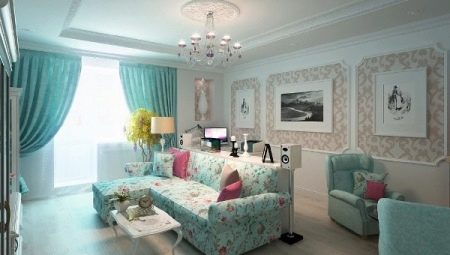
The modern Provencal style takes its origin from the French province of the same name, located in the south of the country. This region, with its unique climate, has been praised by renowned master painters on numerous occasions. His landscapes, replete with pastel tones and bright colors, evoke feelings of serenity, lightness, joy and happiness, warmth and comfort. Provence or the style of "French country chic" is a worthy alternative to the newfangled industrial styles of interior decoration.
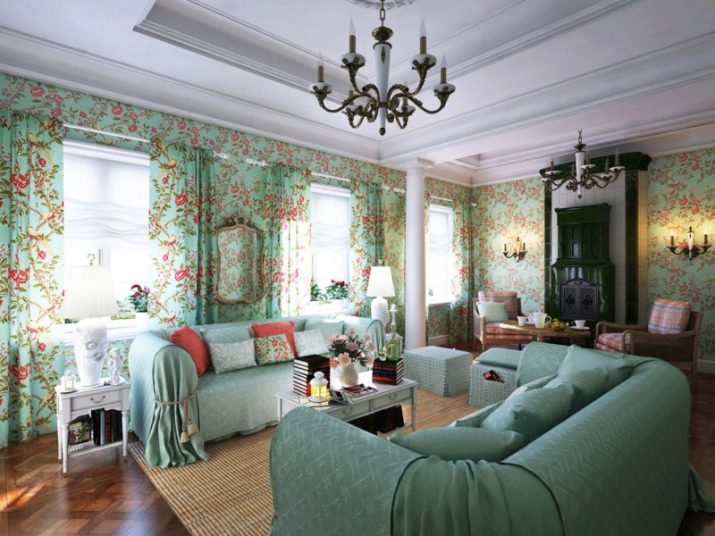
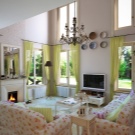
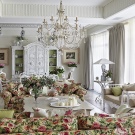
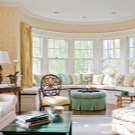
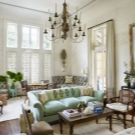
Peculiarities
Provence is a style characterized by comfort, simplicity and naturalness of textures, lack of pretentiousness and complexity of details. The presence of a special rustic chic in it does not exclude the use of romantic elements in the decoration of premises. Materials are dominated by patina wood and textiles.
The interior of the hall, made in this style, conquers with its unobtrusiveness, somewhat deliberate roughness of the plastered walls, worn-out furniture in places and absolutely warm, calm tones of the atmosphere.
Such interiors are always filled with air and give off a pleasant antiquity. The style assumes the use of natural materials, a relaxed lifestyle and complete natural harmony. The main symbols of the style are olive branches, lavender flowers and sunflowers.
The interiors, made in the Provencal style, clearly capture the pristine rural naturalness and the vastness of fields with forbs, slightly burnt out under the bright rays of the warm sun.
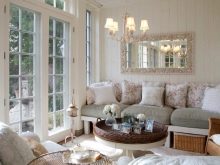
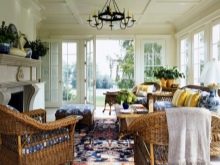
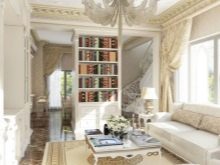
The style is characterized by a number of features that are relevant for the design of living rooms:
- a fireplace is a useful element of style;
- dominance of wood furniture;
- use of natural materials in finishing works;
- simplicity in everything;
- neutrality of the used shades of the color spectrum.
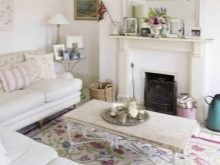
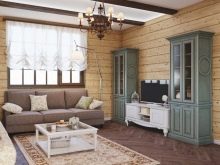
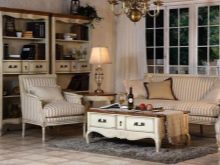
An indispensable element for a Provence-style living room are significant size of windows, usually decorated with loose curtains. To convey and display stylistic strokes, pictures are placed on the walls, framed by aged frames.
Another advantage is that Provencal style is versatile. The desire for simplicity dominates, and the entire interior setting is created with the help of decoration, decor and furnishing features.
A room decorated in this style can be of various sizes and shapes. In this case, there is no need to change the configuration of the room (create bay windows, ledges, etc.).

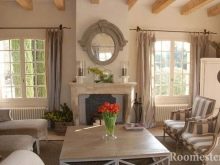
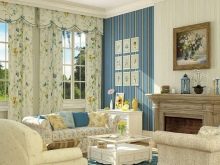
Finishing materials
The living room is decorated using:
- forged parts;
- faience and ceramic items;
- weaving from a vine;
- wood, brick and stone;
- natural fabrics.
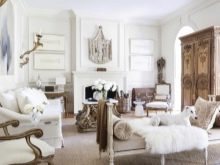
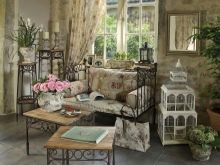

Wall decoration, as a rule, does not carry a special style load, but provides a certain background for the installed furniture and decor elements. The use of wallpaper is not recommended, but there are exceptions, for example, in the form of a canvas for painting.
When decorating walls, use stone masonry or wood cladding. After that, the walls are painted in tones corresponding to the chosen design option, or they are left in their natural form.

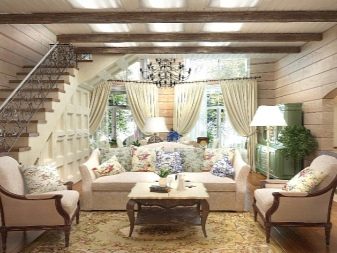
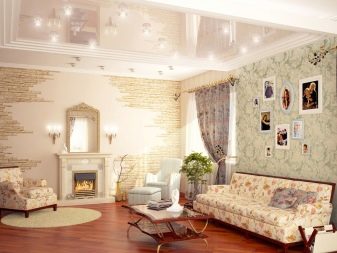

Floor
The floors are finished using planks or aged floor tiles. They are painted in light colors, and often covered with a varnish. Floors made from terracotta tiles or matt porcelain stoneware, which is often used with chips to create a style effect.
Wood parquet is usually laid using the simplest parquet pattern. - "deck", or covered with a laminate patterned with a wood texture. Light floor coverings are also used, covering the wood with pastel colors.
To create a more solemn look, use and parquet board, made under bog oak. Wood-based panels (square, rectangular, hexagonal) or from fired clay are quite suitable as floor coverings.
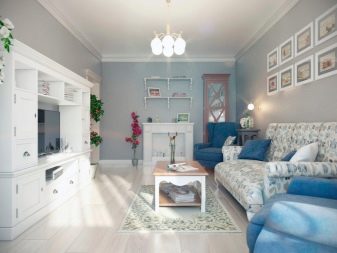
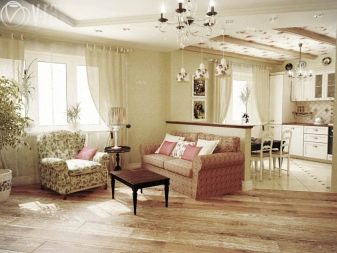
Walls
Wall surfaces simply whitewash... Sometimes, in addition to white, moderate light tones are used.
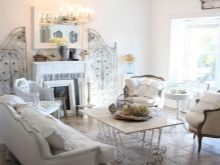
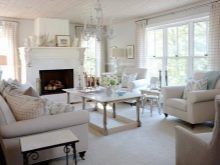
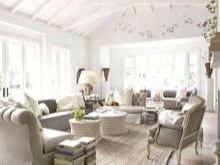
The traditional option is in wall decoration with boardsfixed to the full height of the walls, which are then painted in muted colors. The pleasant effect is facilitated by the use of a light tinting varnish, which emphasizes the unique patterns of the wood.
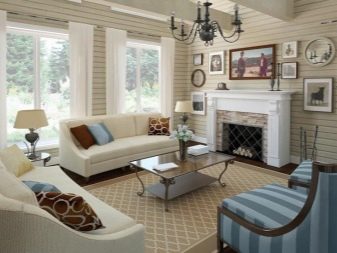
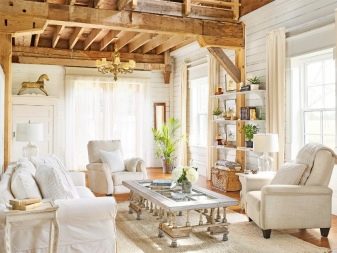
You can also diversify the interior by using wall panels made to match the tone of the plaster and covering the bottom of the wall up to 1 m high.
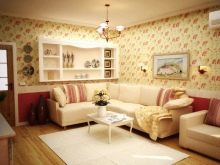
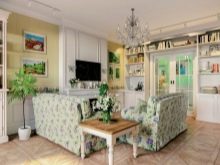
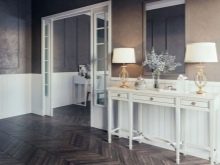
Window frames, usually made of wood, are painted in light colors or in shades that match the color of the ceiling beams. The size of the windows should be large, give a lot of light and emphasize the feeling of spaciousness. In the manufacture of frames, it is possible to use materials that imitate the natural texture of wood.
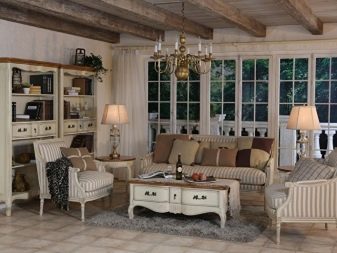

Ceiling
Ceilings are decorated with wood and timber beams, which are usually paint in light colora. It is allowed to leave these details in their natural form or change their appearance fragmentarily, processing with a special varnish.
For ceilings are also used board and lining, which are covered with paint, often in pastel shades.
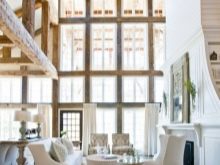
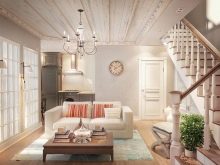
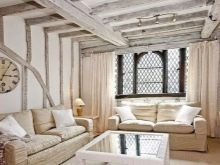
Often ceilings are supplemented with aged decorative beams... For some lightening of the interior, they are painted in the same tone as the ceiling, but dark shades are also possible.
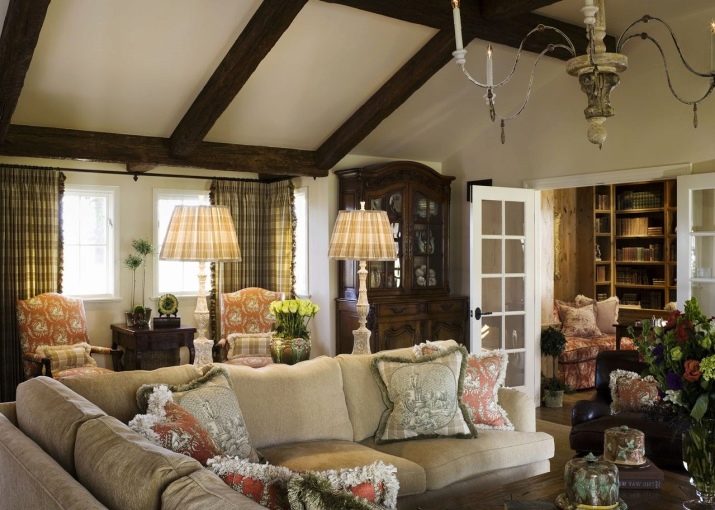
Selection of furniture
Furniture in this style, fulfilling its main function, also carries a significant decorative load. Furniture items should be made from natural materials. For this, it is quite suitable antique elements or artificially aged. Deliberately rude furniture design will be a natural addition to the overall design of the room.
Light-colored upholstery is used for furniture. Gloss will be excessive, matte surfaces are preferable. We also avoid chrome-plated elements, plastic and glass parts. Suitable furnishings:
- buffets with artificially aged elements and abrasions on them;
- open (no doors) lockers;
- oval old tables;
- chairs with carved legs;
- chests of drawers with slightly peeled paint;
- wicker chairs, sofas, etc.
Preference is given to simplified furniture options. For example, the walls in a modular design, made in the old style, decorated with abundant gilding and carving.
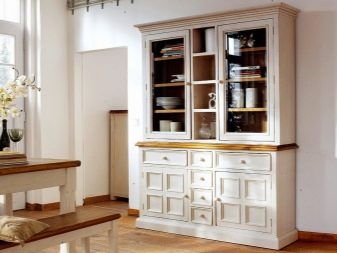
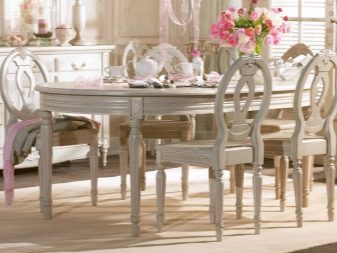
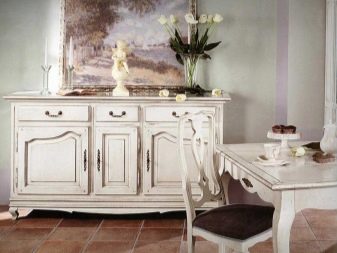
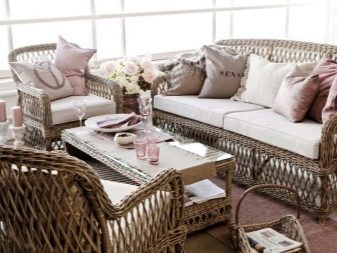
Soft types of furniture are complemented by wooden details. Forged products are used as a complementary decor.
The central element of the interior of the hall is usually a sofa, the armrests of which are made of wood. More sophisticated pieces of furniture in the form of original seats with wrought iron legs are quite acceptable.
In accordance with the style for the elements of upholstered furniture, textile covers of a single color are used, with abundant decorations in the form of floral patterns. Furniture items should not be placed exclusively along walls - it is important to creatively group them in any order. Models of sofas with carved legs and patina are acceptable. Next to them, chairs will look harmoniously, slightly different in shape, and in color, muted tones.

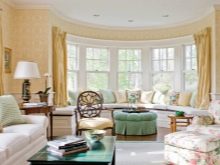
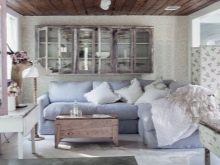
Old photo albums, frames, paintings with landscapes and mirrors will become a wonderful addition to the furnishing of the living room. Perfectly fit into the style old chests, baskets, as well as wicker furniture items.
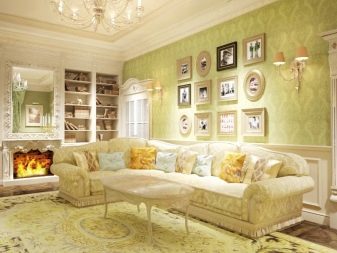
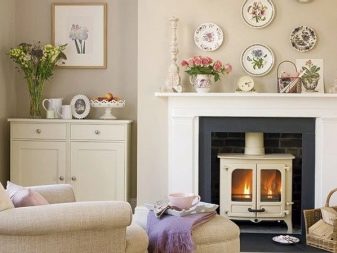
An oval table covered with an embroidered tablecloth will mark the center point of the room. Chairs can be made of antique metal. To do this, they are painted, and then the coating is erased in some places. Decorative cushions are placed on top of the seats.
The magazine table with tinted, aged wood can be used for its intended purpose or as a TV stand.
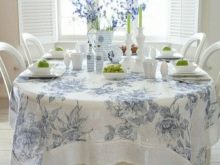
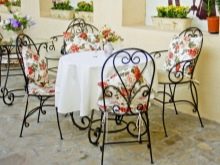
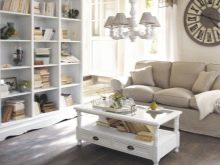
In addition to the classic options for upholstered furniture, typically southern options are often used. For example, sofas with wrought metal frames. Seats with wicker backs, designed for 2-3 people, add an original effect to the interior.
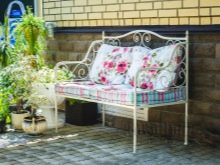
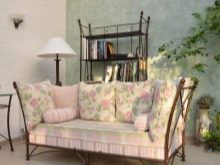
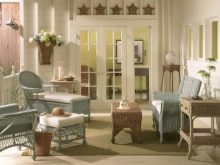
Color palette
Slightly burnt out, natural light tones are basic for Provence - the abundance of bright, obtrusive tones is alien to this style.
The dominant color spectrum is rather moderate and includes tones:
- unsaturated indigo;
- white;
- saffron;
- pistachio;
- lavender;
- olive.
Ocher and some shades of red are often used. The presence of bright elements is allowed, but dosed.
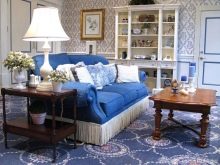

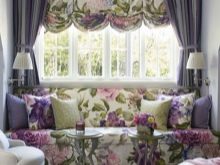
The use of black elements is also possible:
- in decorative ornaments;
- in forged lamps;
- when finishing furniture surfaces.
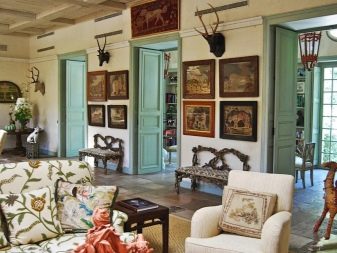
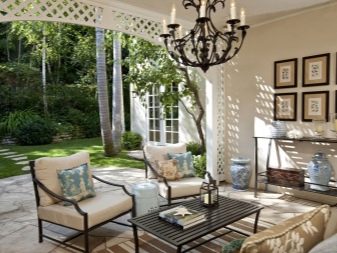
Bright fragments can be present in the form of fresh flowers or deadwood compositions. Floral design is quite appropriate for curtains, sofa textiles, and other furnishings. Combining colors is welcome. So, for furniture made in light blue colors, rugs and curtains of other moderate colors will be a great addition. If these tones are basic in the interior, it will be useful to dilute the color spectrum with brighter accessories.
Wherein accents should not be made too explicit, it is more useful to choose smooth color transitions. Interiors are often dominated by terracotta and ocher tones. However, the style is given its due in both green and blue shades.
The visual range of the interior should look so vivid that the smells of lavender and floral aromas are felt. In this case, the image of the interior can be considered complete. To revive the background, use separate inclusions of tones:
- lavender;
- citrus fruits;
- sea wave.
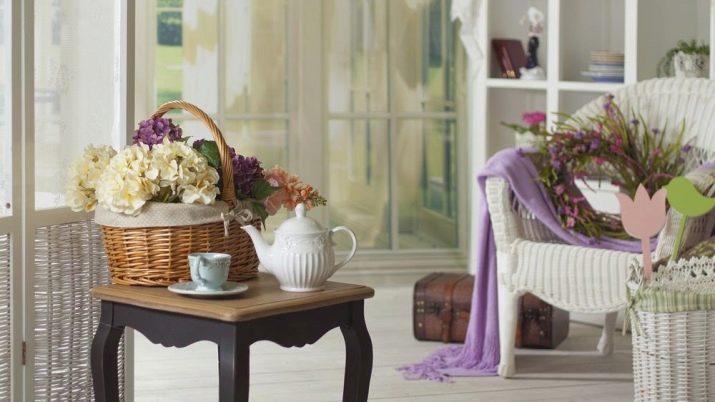
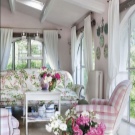
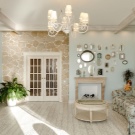
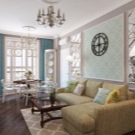
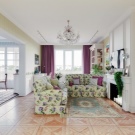
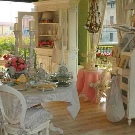
Lighting
Ideally, the windows of a Provence-style hall should "look" to the south. In this case, it is recommended to equip the room with large window openings. In other cases, there is the need for a more careful approach to the selection of the order of lighting, effectively decisive and stylistic content.
The presence of a central chandelier is often complemented by other lighting fixtures. This allows you to organize a sufficient level of light and optimally zone the space of the hall. Preferred devices with different shades, made:
- from textiles;
- from weaving;
- from glass.
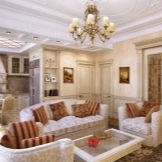
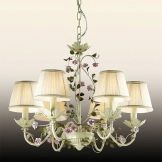
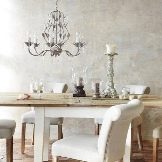
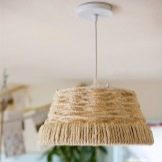
Glass shades are often decorated with floral shapes. Forged fixtures are used as complements to similarly decorated pieces of furniture. The unity of design must be strictly observed. At the same time, fine forging on a light background allows you to diversify the surroundings, maintaining the overall style of the interior.
When choosing a chandelier it is important to adhere to a number of requirements. Massive chandeliers are installed in halls with high ceilings. For small rooms with low ceilings, ceiling-type models with several shades are suitable.
In the evenings and at night, massive wrought-iron chandeliers, types of sconces, lampshades, wall and floor lamps that imitate antiquity are perfect for lighting. Wherein lampshades should provide a soft pastel light that promotes a serene environment of complete relaxation.
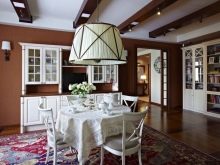
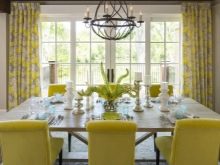
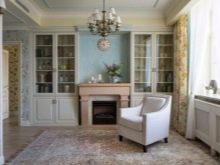
Decor and textiles
The decorative sector of the interior is its most important element. A variety of hand-made crafts are suitable for halls of this style, for example:
- dolls;
- framed family photos;
- porcelain small plastic;
- boxes;
- wicker baskets;
- landscapes.
- jugs;
- shoes;
- teapots and cups;
- kegs, etc.
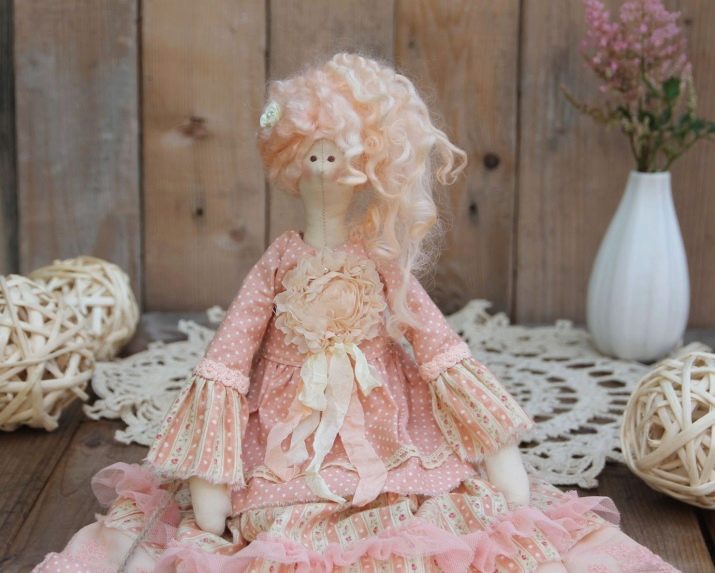
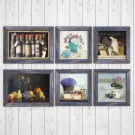
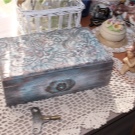
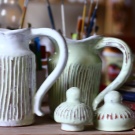
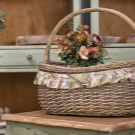
A bird cage is the most popular element of Provence, which can easily replace a chandelier. Provence is characterized by the use of a significant number of pots for flowers, filling the color of the hall with folk motives. How pots are used by different items:
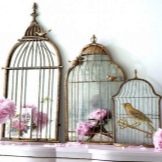
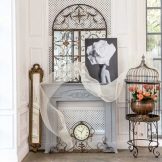

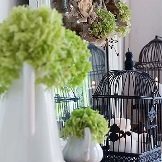
Fine interior details will be homemade decoupage items: saucers, cuckoo clocks, shelves, etc. It is quite appropriate to decorate the shelves with hand painting using acrylic paints. These can be flower arrangements made in a muted color spectrum.
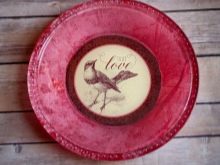
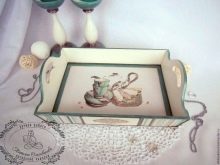
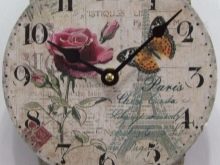
Tables and sofas are covered with light bedspreads with light, unobtrusive patterns. The walls of the hall are decorated with painted plates and saucers, wall clocks, masks, and various wooden or porcelain items.
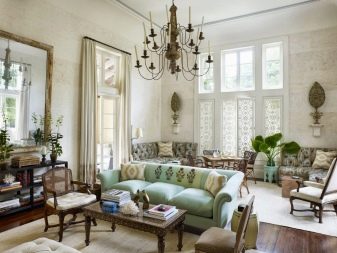
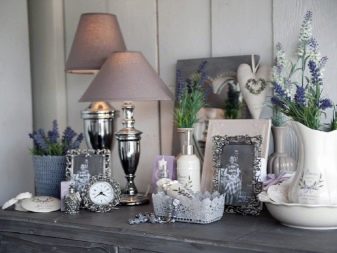
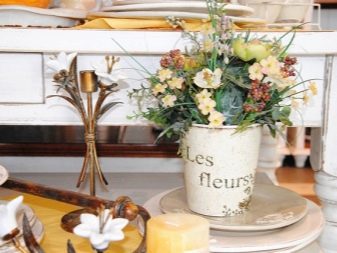
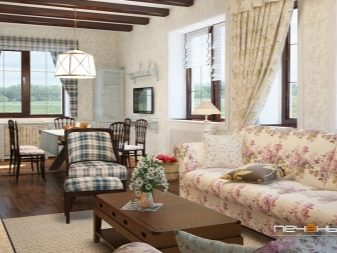
The invariable attribute of Provence - Natural flowers, pleasing with the beauty and freshness of natural aromas. Place them anywhere.
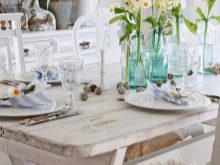
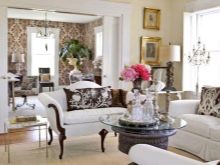
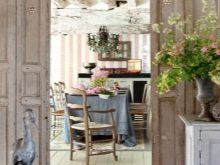
Provence involves the obligatory use of textiles. For the formation of a special chic are suitable:
- chintz material with pictures;
- lace napkins with ruffles, openwork embroidery;
- striped and checked fabrics for curtains and bedspreads;
- linen linen.
Silk and velvet products are not combined with this style. Items with abundant fringe and gilded patterns are also not recommended. Pretentiousness is alien to simplicity. It is recommended to lay hand tracks on the floors. The windows are fitted with loose curtains combined with chintz and linen canvases. The color of the products is light with large colors and patterns.
It is advisable to place a carpet with traditional oriental ornaments in the hall, but ordinary striped rugs evoking rural motifs will also be fine.
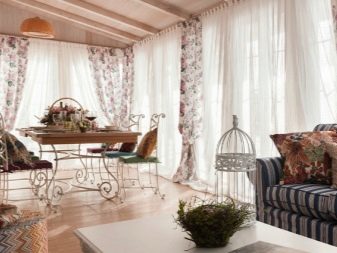
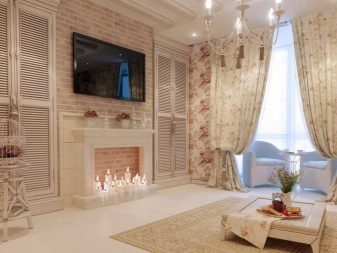
Recommendations
Small living room, no more than 17 sq. m., executed in a Provencal style, will turn into a cozy place for real relaxation for you and will not require costly repairs. Here are some guidelines.
- Experts advise applying a moderate aging effect to wall coverings. Fragments of brickwork can be seen in places on the walls.
- Herbaceous floral motifs and patina harmoniously look not only in the halls.This design is quite suitable for interiors and dining rooms, and kitchens. Even an apartment in the city can be given elements of rustic chic, not to mention the suburban version. For this purpose, several rooms are usually combined, for example, a living room with a kitchen or a hall with a dining room.
- In order to form an effective design, specialists often play on contrasts. For example, ceilings are tinted in light colors, and beams are tinted in dark tones.
- In small rooms, it is not advised to place large pieces of furniture. For example, a good option in a country house or in a small country house would be the use of modular furniture, which allows you to combine it in any room of any size and configuration.
To best match the style, the doors on the wardrobes are sometimes changed to textile fabrics.
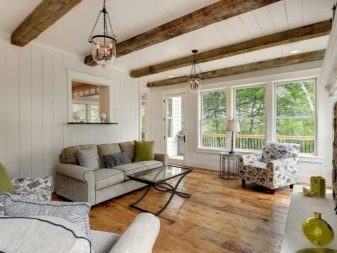

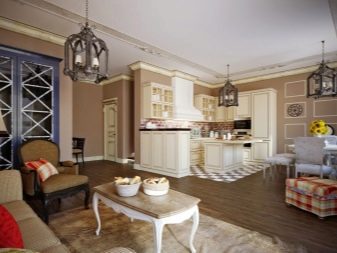
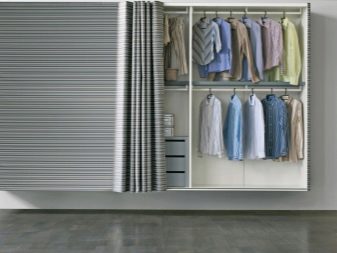
Beautiful examples of interior design
Let's take a look at some good examples of Provencal style rooms.
- Light olive walls, an abundance of floral prints, white furniture, decorative plates and cushions are Provence classics.
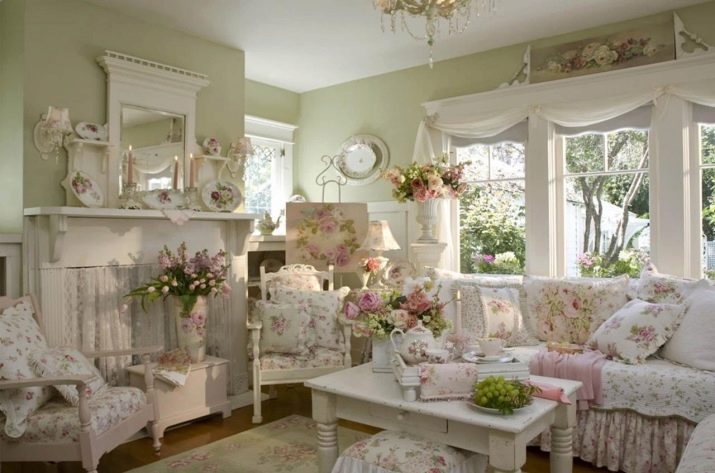
- A more modern interpretation: the walls have golden striped wallpaper, the floor is covered with wood-like laminate, olive cabinets with glass doors, beige furniture. Marble busts, a floor lamp and an antique tea set serve as accent accessories.
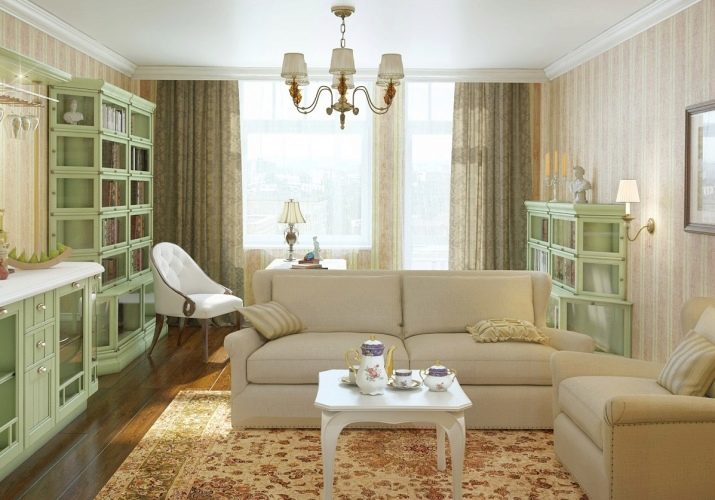
- And this is how the situation in a country house or in the country may look like: a deliberately rough dark ceiling, a light floor, a large window, next to which there is a soft blue sofa decorated with white pillows. Old furniture reminds of the style of Provence - a hanging cabinet, tables. Screens with a floral print, a floor lamp on a twisted wooden leg and a decorative roe deer head in a wreath of flowers perfectly complement the interior.
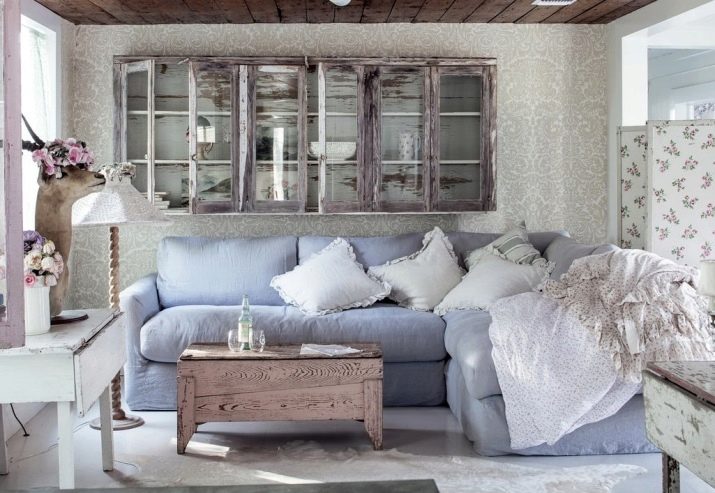
You will learn about the features of the interior in the Provence style in the next video.








